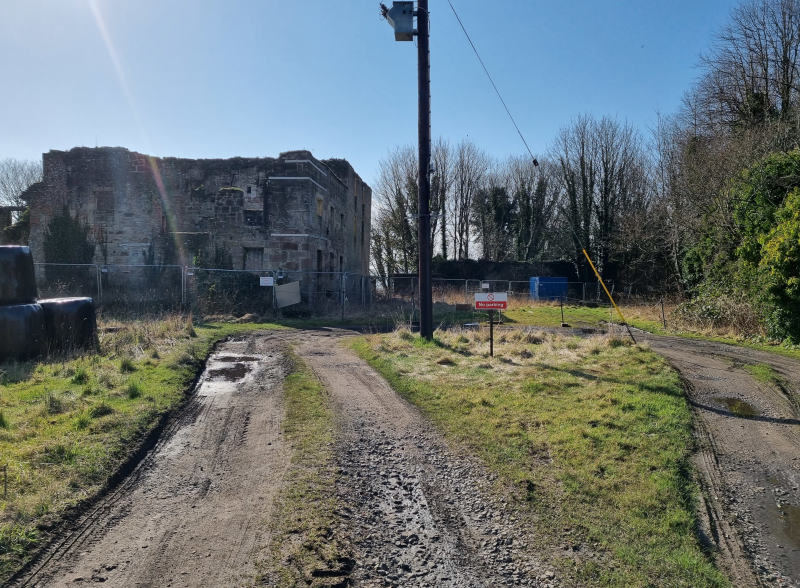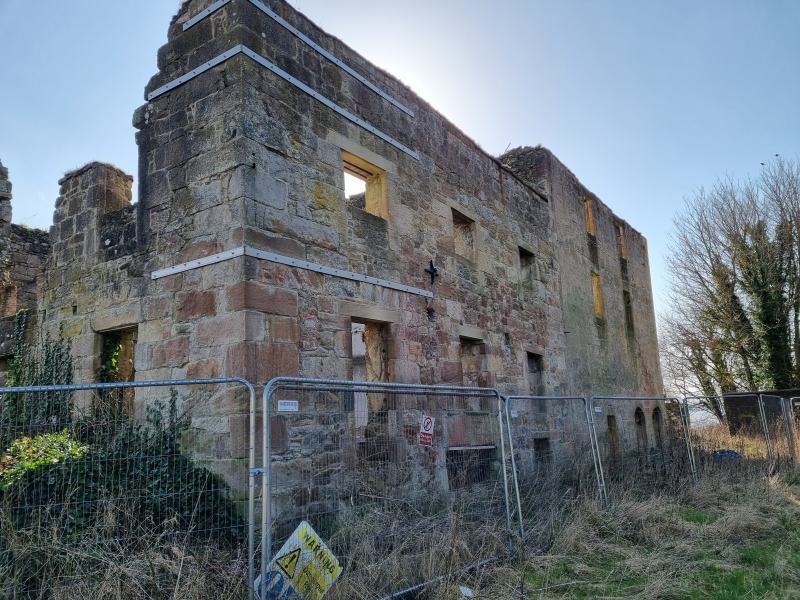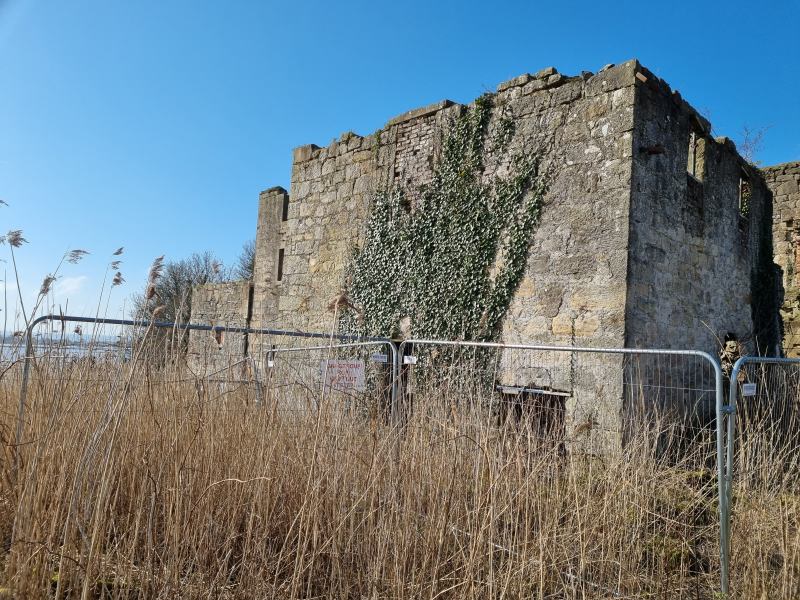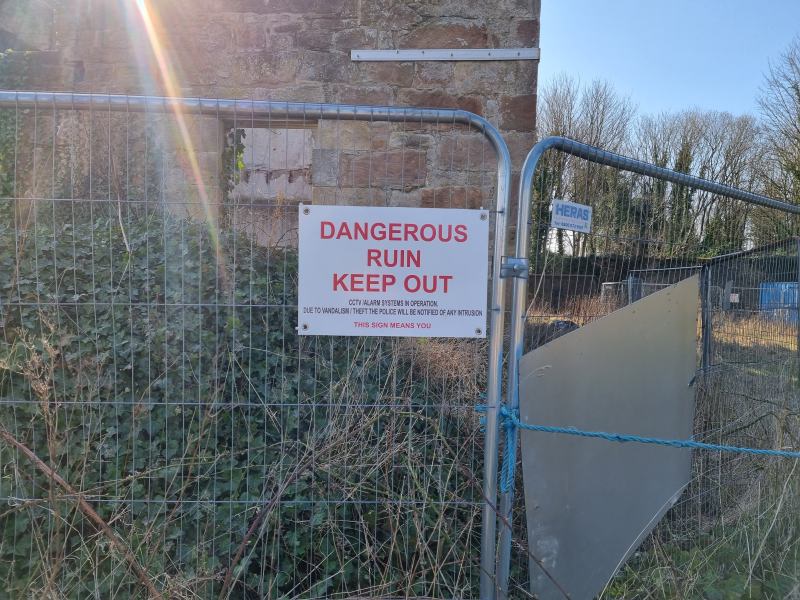The hamlet of Kennetpans in Clackmannanshire was formally a salt panning community formed by the monks at Kennetpans Monastery. The monastery is believed to have been closed down during the Scottish Reformation of the early to mid-16th century. Little if anything of the monastery still exists.
In medieval times salt was mainly used for preserving food for the winter months. The salt was obtained by evaporating sea water in large cast iron pans over coal fired furnaces. The practice continued until the late 18th century. The panning industry was made possible in this area by its close proximity to some of Scotland’s earliest coal pits, Kennetpans mine being one, which was known to still be operating as late as 1862.
Kennetpans currently consists of a small row of houses, to the west of a single-track road, with the derelict 18th century Kennetpans distillery buildings at the south end of the road between the houses and the former pier on the river Forth. The road to Kennetpans is signposted with a 'private road - no unauthorised vehicles' sign at the junction for the hamlet.
Once there at the hamlet, there are no parking signs at the ruin of the Kennetpans distillery, and various 'keep out' signs at the distillery fence-line.
 |
 |
 |
 |
In the 1730's Kennetpans was the largest distillery in Scotland and Kennetpans had its own pier, which once conducted a brisk trade.
For much more information on Kennetpans Distillery and its owners, please visit the Kennetpans Trust website at www.kennetpans.info.
Little of the site of the once notable Kennetpans House remains.
